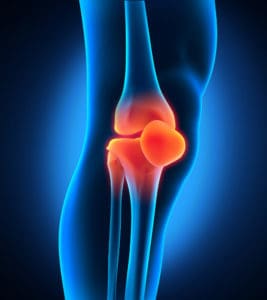For knee replacement surgery, physical therapy in Laurel is the best way to improve your chances for a successful outcome

May 31, 2018
No matter your size, profession or physical activity level, your knees take on a great deal of impact just moving about throughout the day. But for those involved in sports that include lots of running, jumping and cutting, or for overweight and obese individuals, the amount of pressure and resulting damage on the knees is far greater. This is one of the main reasons that the knees are one of the most commonly injured regions, as well as the most commonly replaced joint in the body. Deciding to have knee replacement surgery can be a difficult choice that should only come after attempting other treatment options, but if you do go this route, physical therapy in Laurel before and after the procedure is the best way to help you recover as quickly as possible.
Knee damage requiring surgery can develop from a specific injury or knee alignment issues, or it may arise from conditions that develop over time like bone disease, osteoarthritis or rheumatoid arthritis. One of the leading risk factors for osteoarthritis is being overweight or obese, as excess body weight adds to the strain on the knees and accelerates the break down of protective cartilage in the joint. As this cartilage continues to deteriorate, the bones of the knee joint no longer have protection between them and will eventually begin to rub against one another. This results in pain, swelling and difficulty walking, running or even standing up from a chair.
Weight is a complicated subject and there are countless reasons why a person may be overweight or obese, but in some cases, thyroid disease may be responsible. The hormones produced by the thyroid—a gland located in the front of the throat—are largely responsible for your metabolism, the process by which the body digests food and turns it into energy. If you have an underactive thyroid, you will burn fewer calories, which causes excess calories to be stored in your body as fat. Even worse, thyroid disease can result in feeling tired and having less energy to exercise, which can further add to this weight gain.
If excess weight from thyroid issues or other problems leads to knee pain/damage, it’s best to treat it conservatively (non-surgically) first with physical therapy, some forms of exercise and certain lifestyle modifications. If knee pain continues to be bothersome after attempting various types of conservative treatment, patients should evaluate the option of having surgery with their physical therapist and an orthopedic surgeon.
If you’re found to be a good candidate for knee replacement surgery, your surgeon will explain the procedure itself, as well as the preparation and recovery process that will come with it. Physical therapy in Laurel is an integral component of this entire process, and your physical therapist can help ensure that the surgery is successful by providing evaluation and treatment before and after the procedure.
The role of physical therapy in Laurel throughout the surgical process
Before surgery
- The better shape you’re in before surgery, the better your results will be when coming out of it, especially in the short term
- Your physical therapist will teach you a number of exercises and show you how to walk with an assistive device (e.g. cane or crutches) after the procedure
- They will also discuss important precautions and adaptations to make at home
Immediately after surgery
- Most patients will stay in the hospital for 2-3 days following surgery
- Rehabilitation typically begins almost immediately after waking up: your physical therapist will attempt to have you standing up and walking around within 24 hours, which is a critical component of recovery
- Your physical therapist will help you with the process of walking with an assistive device again and instruct you on how to get up from bed and chairs
- Some strengthening and flexibility exercises will also begin at this time
After being discharged from hospital
- The core of your recovery begins after the hospital once you begin with your physical therapy in Laurel; the goal of this portion of treatment is to help you regain your strength, flexibility and physical abilities
- Range of motion exercises: swelling and pain may make it difficult to move normally, but these exercises are designed to help you restore your flexibility
- Strengthening exercises: muscle weakness in the thigh and lower leg is a another big problem and regaining your strength is essential; as you rebuild strength with these targeted exercises, eventually you’ll no longer need your cane or crutches
- Body awareness and balance training: these specialized training exercises will help your muscles relearn how to respond to changes that require good balance and body awareness, such as uneven sidewalks or rocky ground
- Activity-specific training: as you gradually regain your physical capacity, your treatment program will progress to include specific exercises targeted exercises for your sport or occupation
Deciding to have surgery can be a difficult and overwhelming process, but physical therapy in Laurel can help by guiding you at every step along the way. If you’re scheduled for knee replacement surgery, contact us at CAM Physical Therapy at 301-776-9443 to schedule an appointment at any of our three locations in Laurel, Hyattsville or Glenn Dale/Bowie, or click here for more information on physical therapy with knee replacement surgery.